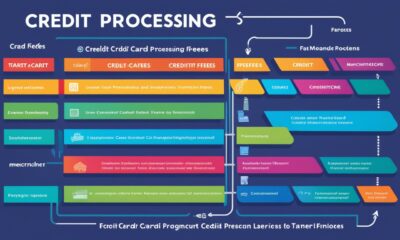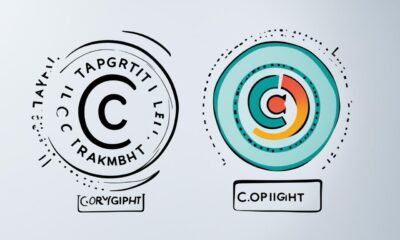Market Information Analyzed
How to Identify Your Print Business Target Market
Kickstart your print business success by identifying your target market through strategic analysis and personalized marketing approaches. Discover how to reach your ideal customers effectively.

In order to identify your target market for your printing business, start by analyzing your existing customer relationships to understand their preferences and behaviors. Identify specific industries by studying trends and exploring growth opportunities. Use demographic information to tailor marketing campaigns and create targeted advertising lists. Increase sales by segmenting your audience based on demographics, psychographics, and behaviors, adjusting print marketing strategies to effectively reach them. By concentrating on these factors, you can provide personalized experiences, foster customer loyalty, and attain business success. Additional assistance for fine-tuning your target market strategy can be found below.
Key Takeaways
- Analyze current customer relationships for preferences and behaviors.
- Identify desired industries for market research and growth potential.
- Utilize demographic data to target specific audiences effectively.
- Build targeted advertising lists through segmentation and data collection.
- Enhance sales with tailored strategies based on customer data and feedback.
Importance of Target Market Identification
Identifying your print business target market is essential for tailoring products and services to meet specific customer needs. Understanding the demographics, preferences, and behaviors of your target market is vital for effective marketing strategies.
By knowing your target market, you can allocate resources efficiently and create personalized experiences for existing customers. Building long-term relationships with customers through tailored solutions leads to customer loyalty and satisfaction.
Additionally, identifying your target market helps differentiate your print business from competitors and positions you effectively in the market. This targeted approach allows you to focus on the needs of your specific customer base, leading to higher customer retention and increased sales.
Analyzing Current Customer Relationships

Assessing the strength and depth of our current customer relationships is crucial for understanding their preferences and behaviors. By analyzing patterns and trends in customer orders and interactions, we can gain valuable insights into why customers choose to do business with our printing company. This comprehension allows us to customize our services to meet their needs effectively.
Additionally, demographic data of our current customers provides a wealth of information for targeted marketing strategies. Utilizing customer feedback and insights enables us to continuously improve and enhance our offerings, ensuring that we stand out in the printing business.
Identifying Desired Industries

As I explore pinpointing industries that align with our print business goals, I analyze trends and growth potential to identify those with a high demand for printed materials. When identifying desired industries for our printing services, I focus on market research and industry analysis.
Here are three key factors to take into account:
- Target Audience Needs: Understanding the specific printing needs and preferences of different industries is essential. By tailoring our services to meet these requirements, we can attract a wider customer base.
- Market Research: Conducting thorough market research helps in identifying industries where printed materials are in high demand. Look for sectors such as marketing, advertising, education, and healthcare that rely heavily on printed materials for communication and branding.
- Different Target Industries: Explore diverse industries with specific printing requirements or regulations that align with our capabilities. This approach allows us to tap into new markets and expand our customer reach effectively.
Utilizing Demographic Data for Targeting

To effectively target specific demographics for our print business, we utilize demographic data to tailor our marketing strategies. By analyzing geographic data such as city and state, we can pinpoint locations where our services are in high demand, allowing us to focus our efforts on those areas. Understanding the demographics of different industries and company sizes helps us tailor our print services to meet specific industry needs effectively.
Knowing job titles and age demographics enables us to create marketing campaigns that resonate with professionals in various fields. Gender and marital status data assist in designing print materials that appeal to specific demographics, ensuring our marketing efforts are well-received. Additionally, identifying interests, values, and preferences among potential customers helps us personalize our marketing strategies for higher engagement and better connection with our target markets.
Building Targeted Advertising Lists

When constructing targeted advertising lists, it's vital to contemplate list segmentation strategies, data collection techniques, and audience engagement tactics.
These elements play a pivotal role in developing effective marketing campaigns that resonate with specific groups of potential customers.
List Segmentation Strategies
By utilizing customer demographic data effectively, print businesses can segment their lists for targeted advertising with precision. This segmentation allows for tailored advertising messages, increasing engagement and conversion rates.
Three key strategies for list segmentation include:
- Segment Based on Relevant Criteria: Divide your list by geographic location, company size, job titles, or any other pertinent factors to target specific audience segments effectively.
- Tailor Advertising Messages: Craft unique advertising messages for each segment to resonate with their needs and preferences, increasing the likelihood of conversions.
- Build Custom Audiences: Utilize platforms like Facebook and LinkedIn to create custom audiences based on segmented lists, enabling precise targeting for your marketing campaigns.
Data Collection Techniques
Effective data collection techniques are vital for building targeted advertising lists that drive successful marketing campaigns. By utilizing customer demographic data such as geographic location, company size, job titles, and interests, businesses can create detailed customer profiles.
Segmenting the audience based on specific criteria allows for the development of tailored marketing campaigns that resonate with different customer segments. Leveraging platforms like Facebook and LinkedIn enables precise ad targeting using these customer profiles.
Additionally, uploading existing customer or prospect lists to ad platforms can help reach similar audiences through lookalike targeting. It's important to optimize online marketing efforts by employing data-driven techniques to enhance targeting and ultimately drive better results for the business.
Audience Engagement Tactics
To enhance audience engagement and build targeted advertising lists effectively, it's important to leverage customer demographic data and utilize platforms like Facebook and LinkedIn for precise ad targeting. By following these tactics, you can improve the effectiveness of your online advertising campaigns:
- Utilize customer demographic data such as geographic location, company size, job titles, and interests to create targeted advertising lists.
- Leverage platforms like Facebook and LinkedIn to refine your ad targeting based on specific criteria.
- Upload existing customer or prospect lists to ad platforms to generate lookalike audiences for more efficient marketing strategies.
Implementing these audience engagement tactics won't only enhance lead generation and sales but also improve the overall effectiveness of your online advertising efforts.
Leveraging Customer Profiles for Marketing

Utilizing customer profiles for marketing purposes enhances the precision of targeted campaigns by providing valuable demographic insights. By analyzing information such as geographic location, company size, job titles, age, gender, and interests contained in customer profiles, businesses can tailor their marketing efforts effectively. Understanding customer preferences and values through these profiles enables the creation of personalized marketing campaigns that resonate with specific target audiences.
Platforms like Facebook and LinkedIn allow businesses to leverage customer profiles for targeted marketing by enabling precise ad targeting based on criteria like company size and job titles. Additionally, uploading customer or prospect lists to ad platforms can help in creating lookalike audiences, improving the matching criteria and optimizing online marketing efforts.
Leveraging customer profiles not only facilitates targeted marketing but also enhances the effectiveness of personalized marketing campaigns, ultimately leading to better engagement and conversion rates.
Enhancing Sales Through Targeted Strategies

By analyzing customer data and preferences, businesses can enhance sales through targeted strategies that resonate with specific audiences. Understanding the demographics and interests of your existing customers is essential for developing effective print marketing campaigns.
Here are three key ways to enhance sales through targeted strategies:
- Utilize customer data: Analyze customer information to identify trends in demographics, interests, and preferences. This data can help tailor your print marketing strategies to better appeal to your target audience.
- Seek feedback: Engage with existing customers through surveys and focus groups to gather direct insights. This feedback can provide valuable information on how to improve your print marketing materials and attract more customers.
- Segment your audience: Divide your customer base into different segments based on demographics, psychographics, or behaviors. By creating targeted marketing approaches for each segment, you can increase the effectiveness of your print campaigns and drive sales.
Frequently Asked Questions
Who Is the Target Market for a Printing Company?
The target market for a printing company consists of businesses, organizations, and individuals seeking printing services. Businesses often require marketing materials, promotional items, and branding materials.
Individuals may need custom invitations, event flyers, business cards, or personalized stationery. Organizations commonly seek signage, banners, posters, and visual communication materials.
The target market can vary by location, industry focus, and services offered by the printing business.
What Are the 4 Ways to Identify Your Target Market?
One way to identify your target market is by analyzing customer data to pinpoint common traits, demographics, and behaviors.
Another method involves conducting market research using tools like surveys, focus groups, or online analytics to gain insights into your audience.
You can also segment your audience based on demographics, psychographics, or behaviors for tailored marketing strategies.
Utilizing analytics tools to track campaign performance and gather data on customer behavior is another effective way to identify your target market.
How Do You Determine the Target Market?
To determine the target market, I analyze customer demographics, preferences, and trends. Evaluating existing data helps me understand who my primary audience is.
Market research provides insights into potential customers' needs. By considering factors like location and interests, I can tailor my marketing plan effectively.
Conducting thorough research and staying informed about customer trends are key in identifying and engaging with the target market for my print business.
How Do I Find the Target Audience of My Business?
To find the target audience of my business, I analyze customer data, evaluate existing relationships, and utilize relevant information like demographics and geographic data.
By understanding who already engages with my business and creating targeted lists for advertising, I can effectively reach potential customers.
Leveraging resources to enhance leads and sales guarantees a strategic approach to targeting my print business market for growth and profitability.
Conclusion
To sum up, identifying your print business's target market is like discovering the perfect puzzle piece to complete your picture of success. By examining current customer relationships, pinpointing desired industries, and utilizing demographic data, you can create targeted advertising lists and customer profiles to enhance sales.
With a clear focus on your audience, you can tailor your marketing strategies to meet their needs and drive business growth. So, grab your magnifying glass and start revealing the key to revealing your print business's potential.
Market Information Analyzed
Top 10 Insights From UBS Business Jet Market Index
Get ready to uncover the growth trends, technological innovations, and market dynamics shaping the business aviation sector according to UBS Business Jet Market Index.

The UBS Business Jet Market Index provides valuable insights for the business aviation sector. Positive growth trends, sustainable products, and advanced technologies are propelling the market forward. Innovations such as AI, machine learning, and eco-friendly models are shaping the future of the industry. Companies that are expanding their distribution networks to enter new markets are witnessing an increase in demand. Regional dynamics in North America, Latin America, and Asia are influencing market trends. The integration of technology is enhancing safety, efficiency, and customer experience. The industry’s focus on innovation and sustainability is driving growth. With a promising outlook until 2030, there is significant potential for growth and investor confidence. Stay ahead of the game by uncovering key industry trends for strategic planning.
Key Takeaways
- Growing preference for sustainable products
- Integration of advanced technologies driving market
- Positive industry development expected
- Multimillion projections by 2030
- Optimistic future outlook reflected
Positive Growth Outlook Until 2030
The business jet market shows a promising growth trajectory until 2030, driven by factors such as sustainability trends and technological advancements.
According to the UBS Business Jet Market Index, the global market for business jets has been steadily expanding and is set to continue on a positive path. This growth is propelled by the increasing demand for sustainable and eco-friendly products in the market.
Companies are focusing on integrating advanced technologies like artificial intelligence and machine learning to enhance the quality and efficiency of their business jets, aligning with the sustainability trend.
Rising Demand for Sustainable Products

As we witness a shift towards sustainable practices in the business jet market, the growing demand for eco-friendly products is reshaping the industry landscape. Companies are increasingly prioritizing the development of environmentally friendly business jet models to align with customer preferences for sustainability. Features such as enhanced fuel efficiency and reduced emissions aren't only meeting regulatory requirements but also emerging as key selling points for manufacturers in this market. The integration of sustainable practices not only benefits the environment but also enhances the overall quality and efficiency of business jets.
This rising demand for sustainable products is driving market growth and sparking increased consumer interest in eco-friendly options within the business jet industry. Manufacturers that embrace and prioritize sustainability are likely to gain a competitive edge in the market, appealing to a broader range of customers who value environmentally conscious choices. As this trend continues to evolve, we can expect to see further advancements in sustainable technologies and practices within the business jet market.
Integration of Advanced Technologies

Delving into the domain of advanced technologies in the business jet industry, the integration of artificial intelligence and machine learning has revolutionized product quality and efficiency. Companies within the business jet market are strategically leveraging these advanced technologies to drive growth and meet the ever-evolving demands of customers. The incorporation of artificial intelligence and machine learning is playing a pivotal role in enhancing the performance, safety, and overall experience of passengers utilizing business jets.
This adoption of cutting-edge technologies represents a significant trend that's shaping the future of the business jet industry. By embracing these advanced technologies, manufacturers aren't only able to improve product quality but also to offer innovative solutions that help them remain competitive within the market. The utilization of artificial intelligence and machine learning showcases a commitment to pushing boundaries and delivering high-quality experiences for customers in the domain of private aviation.
Opportunities for Innovation in Companies

Innovation in product development is pivotal for companies in the business jet market to stay competitive and meet evolving customer demands.
Fostering a culture of creativity within organizations can lead to breakthrough ideas that drive growth and differentiation in the industry.
These opportunities for innovation pave the way for companies to adapt to changing market dynamics and secure their position in a rapidly evolving sector.
Innovation in Product Development
In our pursuit of enhancing quality and efficiency, companies in the business jet market are actively embracing innovative approaches to product development. Integration of advanced technologies such as artificial intelligence and machine learning is driving the evolution of business jet designs, meeting the growing customer interest for cutting-edge solutions.
To stay competitive in the market, business jet manufacturers are investing heavily in research and development, focusing on creating innovative products that cater to the changing needs of their clientele. Additionally, the shift towards sustainability and eco-friendly practices is influencing the innovation process, with companies working diligently to develop environmentally conscious business jet solutions.
This commitment to innovation not only fuels growth but also ensures that companies remain at the forefront of the dynamic business jet market.
Culture of Creativity
Steering toward a culture of creativity within companies amplifies opportunities for innovation and fosters a dynamic environment for growth and development.
In the domain of business jets, fostering creativity gives companies a competitive edge in product development. By encouraging risk-taking and experimentation, firms can nurture innovation that leads to breakthrough ideas and solutions.
A creative culture not only drives business growth but also enhances employee engagement and empowerment. Companies valuing creativity are better prepared to adapt to market changes and outperform competitors.
Embracing a culture that prioritizes creativity sets the stage for continuous progress and success in the fast-paced world of business jets.
Expansion of Distribution Channels

In the business jet market, companies are actively expanding their sales networks to tap into new market opportunities and engage diverse retail partnerships. This strategic move aims to enhance their market reach and accessibility for potential customers.
Enhanced Sales Network
Investing in expanding distribution channels is a strategic move to broaden the reach of business jet sales and capture a larger market share. The analysis from the UBS Business Jet Market Index emphasizes the critical role of enhancing the sales network in the industry.
Key companies are actively investing in strategies to expand their distribution channels, aiming to tap into a wider customer base. By improving accessibility and visibility of business jet products through an extensive sales network, businesses can drive market growth and increase their market share.
The UBS index underlines the importance of an effective sales network in maximizing the sales potential of business jets. Strengthening distribution channels is a key focus area for industry players to stay competitive and meet the growing demands of the market.
New Market Opportunities
Expanding distribution channels in the business jet market presents lucrative opportunities for key players seeking to reach untapped markets and broaden their customer base. This year, the market has seen a notable shift towards exploring new avenues for growth and expansion. Here are three key insights regarding the expansion of distribution channels in the year-end market:
- Global Reach: Major manufacturers like Airbus and Boeing are strategically focusing on increasing their presence in emerging regions such as Asia-Pacific and Latin America to capitalize on the growing demand for business jets.
- Customer Segmentation: The growth in distribution channels enables manufacturers to tap into new customer segments, diversifying their clientele and enhancing market share.
- Competitive Edge: Access to new markets through expanded distribution channels is essential for sustaining growth and staying competitive in the dynamic business jet market landscape.
Diversified Retail Partnerships
Diversified retail partnerships play an important role in broadening distribution channels for business jet manufacturers. By collaborating with various retail outlets, companies can expand their reach and connect with a wider range of customers. This strategic approach enhances visibility and accessibility to business jet products, ultimately driving market penetration and solidifying brand presence in the industry. Such partnerships are instrumental in boosting sales and fostering growth within the business jet market. Leveraging different retail channels allows manufacturers to tap into new market segments and capitalize on emerging opportunities. Overall, diversified retail partnerships are a key element in shaping a positive outlook for the business jet market.
| Benefits of Diversified Retail Partnerships | ||
|---|---|---|
| Expanded Customer Base | Enhanced Visibility | Increased Accessibility |
| Market Penetration | Strengthened Brand Presence | Boosted Sales |
Promising Trajectory for Business Jet Industry

Showing a steady ascent, the business jet industry's growth presents a promising trajectory as indicated by the UBS Business Jet Market Index. This positive outlook is supported by various key factors:
- Increased Customer Interest: Customer interest in business jets has seen a notable 11% improvement. This surge in interest indicates a growing demand for these aircraft, potentially driving industry growth further.
- Enhanced Financing Conditions: Financing conditions have experienced a 9% increase, reaching a score of 54. This improvement in financing availability can make it easier for potential buyers to invest in business jets, contributing to industry expansion.
- Positive Market Index Performance: The market index performance has demonstrated encouraging trends, with the index rising to 31. This uptrend suggests a favorable market environment for business jets, hinting at continued growth and development in the industry.
These factors collectively paint a picture of a business jet market with promising prospects for the future, underlining a positive trajectory that industry stakeholders can look forward to.
Key Trends in Global Business Jet Market

The global business jet market is experiencing significant growth, with the market size projected to increase from USD 20,680 million in 2020 to USD 26,070 million by 2027.
Shifts in regional demand towards Latin America, APAC, and Africa are reshaping the industry landscape, while emerging technologies are set to impact the sector's future trajectory.
These key trends highlight the dynamic nature of the business jet market and the evolving factors driving its development.
Market Size Growth
Experiencing steady growth, the global business jet market is on track to surpass USD 26,070 million by 2027, driven by key trends and strategic developments. As the market expands, three significant factors contribute to this growth:
- Increasing Demand: The rising demand for business jets, both in the personal and enterprise sectors, is fueling market expansion.
- Emerging Markets: Regions like Latin America, APAC, and Africa are becoming key growth areas for the business jet market, adding to the fleet based growth.
- Diverse Offerings: With a range of options including Light Jets, Mid-size Jets, and Large Jets, consumers have a variety of choices, further stimulating market growth.
This growth trajectory underscores the dynamic landscape of the business jet industry, driven by evolving consumer needs and global economic trends.
Regional Demand Shifts
As the global business jet market evolves, a notable shift in regional demand trends is becoming increasingly evident. Customer interest in business jets has shown growth in North America, South America, Asia, and the Middle East. However, Europe has experienced a decline of 21%.
The latest UBS Equities index highlights a positive trend in customer interest, with an 11% improvement in customer interest scores. Financing conditions have also improved, with a 9% increase in the financing score to 54, signaling positive changes in the market.
Concerns have been raised about the potential impact of the UK's EU exit on customer interest in business jets in Europe. Regional customer interest scores vary, reflecting shifting demand trends in the global business jet market.
Emerging Technology Impact
With the increasing integration of advanced technologies like artificial intelligence and machine learning, the business jet market is witnessing a significant transformation in product quality and efficiency. This impact is notable through:
- Improved Safety Measures: Advanced technologies are enhancing safety features in business jets, ensuring a secure travel experience for passengers.
- Enhanced Operational Efficiency: Automation and data analytics are streamlining operations, leading to increased efficiency in managing business jet fleets.
- Personalized Customer Experience: Utilizing technology allows for customization in services, catering to the unique preferences of business jet travelers.
These advancements not only elevate the standards within the business jet industry but also contribute to a more sustainable and innovative market landscape.
Focus on Artificial Intelligence Applications

Incorporating artificial intelligence applications into the business jet market is revolutionizing product quality and efficiency. AI technology is not only enhancing the overall quality of business jets but also improving the efficiency of their production processes. Companies embracing AI are experiencing significant growth, with projections indicating multimillion figures by 2030. This trend is in line with the industry's shift towards sustainability and eco-friendliness, meeting the evolving demands of consumers. Major players like Airbus, Boeing, and Bombardier are at the forefront of integrating AI into their business jet designs, showcasing a commitment to innovation and meeting market expectations.
| Benefits of AI Applications in Business Jets | |
|---|---|
| Enhanced Product Quality | Improved Production Efficiency |
| Steady Market Growth | Meeting Consumer Demands |
Implications for Market Players

Implications for market players in the business jet industry point towards promising opportunities for growth and investment. As highlighted by the UBS Business Jet Market Index, several key implications stand out:
- Regional Expansion: The increased customer interest in regions like North America, Latin America, Middle East, and Asia signifies a growing market demand in these areas. Market players should consider expanding their presence and operations to capitalize on these emerging opportunities.
- Improved Financing Conditions: With a notable 9% increase in the financing score, market players can take advantage of improved financing conditions to invest in new aircraft or upgrade existing fleets. This presents a favorable environment for strategic financial planning and acquisition decisions.
- Strong Pricing and Positive Outlook: Anecdotal evidence pointing towards strong prices in the large-cabin class and a positive outlook for business conditions indicates a robust market performance. Market players should leverage this momentum to enhance their competitive positioning and drive profitability in the dynamic business jet market landscape.
Forecasted Industry Growth and Development

The forecasted industry growth and development in the business jet market presents a promising outlook for stakeholders and investors alike. According to the UBS Business Jet Market Index, steady growth and positive industry development are expected until 2030. The growing preference for sustainable and eco-friendly products is a significant trend shaping the market, while the integration of advanced technologies like artificial intelligence and machine learning enhances product quality and operational efficiency.
| Key Insights | Details |
|---|---|
| Market Size by 2030 | Expected to reach multimillion figures, indicating substantial growth potential. |
| Driving Growth Factors | Innovation, introduction of new products, and expanding distribution channels are key drivers of market growth. |
| Technology Integration Benefits | Incorporating AI and machine learning enhances product quality and operational efficiency. |
With the industry's focus on innovation and sustainability, optimism continues to drive the business jet market towards a prosperous future.
Frequently Asked Questions
What Is the Outlook for the Business Jet Market?
The outlook for the business jet market appears positive, with expectations of improvement or stability in the next 12 months. Only a small percentage of experts foresee deteriorating conditions, indicating confidence in the market's future.
This sentiment is supported by increasing trader willingness to boost inventories. Additionally, rising availability of customer financing since May 2009 contributes to this optimistic forecast.
What Is the Trend in the Business Jet Industry?
The trend in the business jet industry showcases a positive shift in customer interest and financing conditions. Remarkably, customer interest scores have risen by 11%, primarily in North and South America, Asia, and the Middle East.
Financing conditions have also improved, with a 9% increase in the financing score.
These improvements indicate a favorable market outlook, supported by increased market index performance, particularly in the 12-month outlook and dealer inventory willingness.
What Company Dominates the Private Jet Market?
Gulfstream Aerospace dominates the private jet market with its high-performance and luxurious aircraft. Known for advanced technology, comfort, and long-range capabilities, Gulfstream's models like the G650 and G550 appeal to corporate and private clients worldwide.
With a strong market presence and reputation for excellence, Gulfstream remains a top choice for private jet buyers.
Which Demand Factors Will Influence Future Sales of Business Jets in General?
I believe that customer interest scores, improved financing conditions, increased availability of customer financing, positive international market conditions, and strong large-cabin class prices will greatly influence future sales of business jets.
These factors collectively indicate a positive trend in demand and potential growth in the business jet market. Customers are showing more interest, financing is becoming more favorable, and market conditions are aligning to drive sales forward.
Conclusion
To sum up, the insights from the UBS Business Jet Market Index point towards a promising future for the industry. Just like a well-maintained aircraft soaring through the skies, the market shows positive growth potential until 2030.
With a focus on sustainability, innovation, and advanced technologies, companies have ample opportunities to thrive.
As we navigate the skies of the business jet market, let's remember to keep our eyes on the horizon for new possibilities and advancements.
Market Information Analyzed
Targeting 7 Key Demographics in the Interior Design Business
Jump into the world of interior design by understanding 7 key demographics and their unique preferences, essential for successful projects.

Targeting 7 key demographics in the interior design industry is vital. It is crucial to understand millennials, baby boomers, luxury clients, eco-conscious consumers, families with children, urban dwellers, and commercial businesses. Millennials prioritize authenticity and sustainability. Baby boomers lean towards classic, durable designs. Luxury clients are all about sophistication and exclusivity. Eco-conscious consumers value green practices. Families require kid-friendly spaces. Urban dwellers look for modern aesthetics and functionality. Commercial businesses need flexible designs. Each demographic has unique needs and preferences that interior designers must consider for successful projects. Being familiar with these groups can lead to tailored designs that meet specific client requirements.
Key Takeaways
- Prioritize authenticity, sustainability, and personalization for millennial clients.
- Emphasize quality, comfort, and longevity for baby boomer clients.
- Provide sophisticated, bespoke designs for luxury clients.
- Showcase expertise in green design for eco-conscious consumers.
- Design kid-friendly spaces with safety features for families with children.
Millennials
Millennials, comprising a significant segment of the interior design market, prioritize authenticity, sustainability, and personalization in their design choices. This generation values genuine materials, eco-friendly practices, and spaces that reflect their individuality.
Being tech-savvy, millennials often turn to digital platforms for design inspiration and shopping, seeking convenience and a wide array of options at their fingertips. Additionally, they place a high value on experiences over material possessions, influencing their interior design preferences towards spaces that cater to creating memorable moments.
Understanding millennials' preferences presents substantial business opportunities and potential growth in the interior design industry. By aligning with their values of authenticity, sustainability, and personalization, businesses can attract and cater to this influential demographic. Leveraging digital tools to engage with millennials and offering experiences rather than just products can set businesses apart in a competitive market.
Adapting to meet the needs and desires of millennials can lead to increased success and relevance in the ever-evolving field of interior design.
Baby Boomers

Representing a significant demographic in the interior design business, Baby Boomers born between 1946 and 1964 prioritize quality, comfort, and longevity in their design choices. As homeowners, they're willing to invest in home renovations and interior design services that reflect their values. Baby Boomers lean towards classic and shift styles, appreciating classic and timeless aesthetics that focus on functionality. Understanding their design preferences is vital for interior designers looking to cater to this demographic effectively.
When working with Baby Boomers, it's essential to emphasize durability and comfort in the design process. They gravitate towards pieces that exude quality and stand the test of time while providing a cozy and inviting atmosphere in their homes. Incorporating elements that evoke a sense of nostalgia or familiarity can also resonate well with this group. By aligning with Baby Boomers' preferences for classic and shift styles that prioritize comfort and longevity, interior designers can create spaces that truly speak to this demographic.
Luxury Clients

Luxury clients in the interior design industry possess significant wealth, enabling them to demand top-tier services and sophisticated design solutions. Their preferences center around exclusivity, superior quality, and distinctive design features that exude luxury.
To cater to this clientele, interior designers must have a keen eye for upscale trends and establish exclusive partnerships with high-end vendors to deliver bespoke creations.
High-End Design Preferences
In the domain of high-end interior design, affluent clients often gravitate towards bespoke, exclusive designs that reflect their individual style and preferences.
When catering to luxury clients, it's important to take into account their inclination for premium materials, custom furnishings, and high-end finishes. These clients typically value the expertise and reputation of top interior designers, seeking a personalized and attentive design experience.
Attention to detail, impeccable craftsmanship, and exceptional service are key components that high-end clients expect in their interior design projects.
Additionally, high-end design preferences often include incorporating rare or limited-edition pieces, sophisticated technology integration, and luxurious amenities for a truly upscale living or working environment.
Exclusive Sourcing Partnerships
Elevating the caliber of materials and products available to high-end interior design clients, exclusive sourcing partnerships with luxury brands play an essential role in creating unique and distinguished projects. Collaboration with prestigious brands offers access to unique, high-quality, and limited-edition items, setting luxury projects apart in the competitive market.
Access to exclusive collections and custom pieces through sourcing partnerships enhances the bespoke experience for affluent clientele. These partnerships enable designers to cater to discerning tastes, providing rare and exceptional design elements that differentiate them in the luxury market.
Eco-Conscious Consumers

When targeting eco-conscious consumers in the interior design business, it's essential to emphasize expertise in green design practices and showcase sustainable projects in portfolios. Understanding the priorities of this demographic, who value sustainability and environmental responsibility, is vital for interior designers looking to cater to their needs effectively.
Here are some key points to keep in mind when targeting eco-conscious consumers:
- Highlight eco-friendly materials and energy-efficient products in your designs.
- Obtain certifications such as LEED or GreenGuard to demonstrate your dedication to sustainable practices.
- Incorporate innovative sustainable practices like upcycling and energy-efficient lighting solutions.
- Educate clients on the benefits of green design and how it aligns with their environmental values.
Families With Children

Shifting focus to families with children, the interior design approach adapts to accommodate essential and kid-friendly spaces. Designing for this demographic involves considering various factors such as safety features, multi-functional spaces, and playful elements. Families with children require spaces that aren't only aesthetically pleasing but also practical and durable to withstand the demands of daily life. When designing for families with children, it's essential to incorporate features like durable and easy-to-clean materials, ample storage for toys, and safety measures to guarantee a secure environment for kids to play and explore.
Creating multi-functional spaces that can grow and evolve with the children is vital in family-friendly design. Understanding the lifestyle and routines of these families helps in tailoring the design to meet their specific needs and preferences. By incorporating bright colors, interactive elements, and thoughtful design considerations, interior designers can create spaces that cater to the unique requirements of families with children, making the home a safe, functional, and enjoyable environment for all.
Urban Dwellers

Urban dwellers demand interior designs that seamlessly blend modern aesthetics with functional and space-saving solutions. Understanding their lifestyle preferences is essential for interior designers targeting this audience effectively.
Here are key considerations when catering to urban dwellers:
- Smart Home Features: Integrating technology for convenience and efficiency in daily tasks.
- Eco-friendly Materials: Using sustainable resources to align with their environmentally conscious mindset.
- Personalized Interiors: Creating unique spaces that reflect their individuality and style.
- Design Trends: Staying updated on the latest urban design trends to meet their evolving tastes.
Commercial Businesses

Commercial businesses, such as hotels, restaurants, and offices, present a key demographic for interior designers. Office design trends, retail space layouts, and hospitality decor concepts play vital roles in catering to the needs of commercial clients.
Balancing aesthetics, functionality, and brand representation is essential for successful interior design projects in the commercial sector.
Office Design Trends
In modern commercial office design, the focus is on creating flexible and collaborative workspaces to enhance productivity. Incorporating biophilic design elements like plants and natural light is popular, while sustainable and eco-friendly designs aim to reduce environmental impact and promote employee well-being. Ergonomic furniture and adjustable workstations are key trends prioritizing employee health and comfort.
Additionally, technology integration, such as smart lighting systems and interactive workspaces, is on the rise to enhance efficiency and connectivity. This holistic approach to office design not only improves the physical workspace but also positively impacts employee well-being and overall productivity in commercial businesses.
Retail Space Layouts
Shifting the focus from office design trends, retail space layouts play an essential role in maximizing customer engagement and driving sales for commercial businesses. Understanding the importance of interior design in retail spaces is key to optimizing customer flow, enhancing sales, and improving overall customer satisfaction.
Efficient layouts can greatly impact the shopping experience by increasing brand visibility and strategically placing products to influence purchasing decisions. Tailoring these layouts to different demographics is necessary for meeting specific customer needs and preferences effectively. Signage placement also plays a crucial role in guiding customers through the store and highlighting promotions.
Hospitality Decor Concepts
How can hospitality decor concepts in businesses elevate the guest experience and boost customer satisfaction?
Implementing innovative design solutions and collaborating with business owners to tailor decor concepts that align with target customer preferences are key.
Design elements such as lighting, furniture arrangement, color schemes, and textures play a crucial role in shaping the ambiance of hospitality spaces.
Prioritizing functionality, aesthetics, and comfort in commercial businesses creates inviting spaces that enhance the overall guest experience.
Frequently Asked Questions
Who Are the Target Audiences for Interior Design?
As an interior designer, the target audiences encompass residential customers looking to enhance their living spaces and commercial clients like hotels, restaurants, offices, property developers, and manufacturers.
By understanding criteria such as age, location, income, education level, and occupation, one can effectively tailor design solutions to meet their specific needs and preferences.
Customer-oriented approaches are key in successfully reaching these diverse target markets in the interior design industry.
What Are Demographics in Interior Design?
Demographics in interior design encompass quantifiable aspects like age, profession, gender, education, income, and more. By understanding these factors, designers can tailor their services to meet the diverse needs of various consumer groups.
Analyzing demographics reveals trends, preferences, and purchasing power within different segments, enhancing business strategies. This information is vital for defining target markets and creating personalized design solutions to attract specific client groups effectively.
What Are the 7 Elements of Design Used in Interior Design and Explain Them?
The 7 elements of design in interior design encompass space, line, form, light, color, texture, and pattern.
Space deals with room area and furniture arrangement for functionality and aesthetics. Line outlines objects, guiding visual flow.
Color sets mood and impacts emotions. Texture and pattern add depth and interest, creating a cohesive design.
These elements work together to create visually appealing and functional spaces.
What Is the Market Segmentation for Interior Designers?
Market segmentation for interior designers involves dividing the market based on key demographics like:
- Age
- Income
- Profession
- Lifestyle preferences
This segmentation helps us tailor services to specific groups of potential clients with unique needs and preferences. Understanding market segmentation allows us to create targeted marketing strategies that resonate with different demographic groups.
Conclusion
To summarize, understanding the diverse demographics in the interior design business is crucial for success. By targeting Millennials, Baby Boomers, Luxury Clients, Eco-Conscious Consumers, Families with Children, Urban Dwellers, and Commercial Businesses, designers can create tailored solutions that meet the unique needs of each group.
It's important to stay informed about trends and preferences within these demographics to provide exceptional service and build lasting relationships with clients. By catering to these key groups, designers can thrive in the competitive interior design industry.
Market Information Analyzed
Top 3 Marketing Strategies for Your Print on Demand Business
Curate a successful print on demand business with these three essential marketing strategies that will elevate your brand to new heights.

If you’re aiming for success in the **print on demand industry**, focus on three key marketing tactics. Take the time to understand your target audience by researching their demographics, interests, and opinions. Utilize popular **social media** channels like Facebook, Instagram, and Pinterest to showcase your products and collaborate with influencers. Implement effective **email marketing campaigns** to generate a significant return on investment through personalized messages and efficient processes. These techniques will boost the exposure, engagement, and sales of your brand. To excel in this field, mastering these strategies is essential.
Key Takeaways
- Conduct market research to understand target audience demographics and preferences.
- Leverage social media for product showcases, testimonials, and influencer collaborations.
- Utilize email campaigns for personalized messages, segmentation, and automated workflows.
Target Audience Understanding
In understanding our target audience, we must conduct thorough market research to identify their demographics, preferences, and buying behavior. By analyzing customer feedback and reviews, we gain valuable insights into what resonates with our target audience. Creating detailed buyer personas based on this data allows us to tailor our marketing messages and product offerings effectively. Utilizing social media analytics helps us identify trends, interests, and engagement patterns among our audience, enabling us to refine our strategies further.
Segmenting our audience based on factors such as age, location, interests, and purchasing habits allows us to create personalized marketing campaigns that speak directly to their needs and desires. Understanding the demographics of our target audience is pivotal, as it forms the foundation for crafting engaging and relevant content. By studying their preferences and buying behavior, we can guarantee that our marketing efforts are strategic and impactful. This thorough approach to target audience understanding sets the stage for successful engagement and conversion strategies.
Social Media Leveraging

Utilizing social media platforms effectively is essential for maximizing the reach and impact of a print on demand business. Social media platforms such as Facebook, Instagram, and Pinterest play an important role in expanding your brand's visibility to a wider audience. By creating engaging content like product showcases, behind-the-scenes glimpses, and customer testimonials, you can attract more attention and drive traffic to your print on demand products.
It's important to use social media analytics to gain insights into audience preferences, engagement metrics, and demographics. This data can help tailor your marketing strategies to effectively target your customer base. Collaborating with influencers in your niche can also be beneficial for reaching a larger audience through social media promotions.
Consistent posting, interactive engagement with followers, and responding to comments are key strategies for building a strong community on social media platforms. By focusing on community building, you can strengthen your brand presence and foster relationships with your customer base, ultimately driving growth for your print on demand business.
Email Campaign Utilization

Moving from social media leveraging to email campaign utilization, the next powerful marketing strategy for a print on demand business involves harnessing the high ROI potential of personalized and segmented email messages. Email marketing offers an average ROI of 3800%, showcasing its effectiveness in driving revenue growth.
By sending personalized emails, businesses can see a 14% increase in click-through rates and a 10% boost in conversions, leading to enhanced customer engagement. Segmenting email campaigns further boosts revenue by 760%, allowing for targeted content delivery to specific customer groups.
Implementing automated email workflows not only saves time but also contributes to a revenue increase, with 75% of companies experiencing financial growth within a year of using automation. Monitoring email campaign performance metrics such as open rates, click-through rates, and conversion rates is essential for optimizing strategies and ensuring maximum effectiveness in reaching customers.
Frequently Asked Questions
What Are the 3 Marketing Strategies?
To boost my print on demand business, I'd leverage social media for wider reach, run personalized email campaigns for engagement, and collaborate with influencers to expand visibility.
What Are the Top 5 Marketing Strategies?
When considering the top 5 marketing strategies, engaging customers through personalized content ranks high. Utilizing social media platforms effectively, optimizing search engine visibility, and leveraging influencer partnerships are crucial.
Additionally, email marketing campaigns and retargeting efforts prove fruitful in driving conversions. By focusing on these key areas, businesses can enhance brand awareness and customer engagement, ultimately leading to increased sales and profitability.
How Do I Make My Print-On-Demand Business Successful?
To make my print-on-demand business successful, I focus on niche selection, engaging with social media marketing, and implementing email campaigns.
Analyzing competitors and trends helps me stay ahead, while investing in quality designs and customer service builds a strong reputation.
What Are the 4 Product Marketing Strategies?
When considering product marketing strategies, differentiation, positioning, branding, and pricing play essential roles. Differentiation highlights unique product features, while positioning shapes consumer perceptions.
Branding builds recognition, and pricing influences consumer behavior. These strategies collectively aim to attract and retain customers, fostering long-term success for businesses.
Conclusion
To sum up, grasping your target audience, harnessing social media, and utilizing email campaigns are vital marketing strategies for success in your print on demand business.
By implementing these strategies effectively, you can reach a broader audience, enhance brand awareness, and drive sales.
Remember, Rome wasn't built in a day, so stay persistent and patient as you work towards building a successful print on demand business that stands out from the competition.
-

 Payment Processing2 days ago
Payment Processing2 days agoNavigating Merchant Services: Rates & Credit Card Fees
-

 Market Information Analyzed3 months ago
Market Information Analyzed3 months agoUnderstanding Copyright vs. Trademark Differences
-

 Market Information Analyzed3 months ago
Market Information Analyzed3 months agoHow Do We Pick the Finest Ocean-Going Product Owner Considering All?
-

 Merchant Services3 months ago
Merchant Services3 months agoFast Merchant Account Services Guide
-

 Market Information Analyzed3 months ago
Market Information Analyzed3 months agoYour Guide to Canadian Business Services & Check Finalizing
-

 Payment Processing3 months ago
Payment Processing3 months agoSide-by-Side Comparison: Credit Card Processing Interchange Fees
-

 Payment Processing3 months ago
Payment Processing3 months agoSafeguarded Credit Card Processing With a Business Bank Account for Secure Online Transactions
-

 Market Information Analyzed3 months ago
Market Information Analyzed3 months agoWhat Are the Actual Digital Obligations Within Business?




















